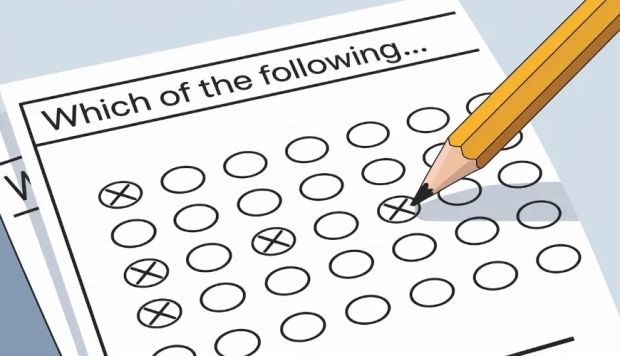EOM best practices help streamline monthly sales and financial tasks

What is EOM?
End of Month, or EOM, is a term you'll often hear buzzing around sales departments. It's that critical time when sales teams push hard to meet their monthly goals.
Think of it as the final sprint in a month-long marathon. Salespeople work overtime, making calls and closing deals, all to hit those important numbers before the month ticks over. This rush isn't just about bragging rights; it's about meeting quotas that can affect everything from bonuses to job security.
But EOM isn't just about the rush. It's a strategic period that can make or break a sales cycle. Successful salespeople use this time to follow up on leads, offer special deals, and leverage the urgency of the closing month to persuade hesitant buyers. It's a dance of timing and tactic, where the end goal is always to close more deals .
Typical EOM Sales Mistakes
EOM might be a time for opportunity, but it's also ripe for mistakes. One common error is the last-minute rush, where sales teams scramble to make up for lost time, often leading to rushed decisions and poorly considered deals. This panic mode can scare off potential customers and tarnish long-term relationships.
Ignoring Customer Relationship Building
Focusing solely on hitting sales targets at EOM can lead salespeople to neglect to build lasting relationships with their customers. In the rush to close deals, the importance of understanding customer needs and providing tailored solutions can fall by the wayside. This short-term approach might bring in quick sales but can harm long-term relationships and brand loyalty.
Over-Promising and Under-Delivering
In their eagerness to seal the deal, sales reps might make promises that the product or service can't fulfill. This not only leads to dissatisfied customers but also damages the company's reputation. Ensuring that what is promised aligns with what can be delivered is crucial, especially when the pressure is on at the end of the month.
Overuse of Discounts
Heavy reliance on discounts to make sales at EOM can devalue the product and negatively affect the company's profitability. While discounts can be an effective short-term strategy, overusing them can lead customers to expect lower prices, making it difficult to sell at full price during the rest of the month.
Neglecting Prospects for Quick Wins
In the pursuit of immediate sales, there's a tendency to focus on low-hanging fruit, often neglecting prospects that require a longer nurturing process. This approach can lead to missed opportunities for substantial deals that could have been developed with a bit more time and effort.
Failure to Plan Ahead
Waiting until the last minute to push for sales can lead to a frantic and disorganized effort to meet targets. This lack of planning not only stresses the team but also results in missed opportunities and inefficient strategies. Effective EOM sales strategies involve continuous effort and planning throughout the month.
Ignoring Data and Insights
Not utilizing data and insights to inform EOM sales strategies is a missed opportunity. Sales teams that don't analyze customer behavior, past sales trends, and other relevant data might miss out on optimizing their sales approach, leading to less effective EOM outcomes.
Underestimating the Competition
Failing to consider what competitors are doing at EOM can put a company at a disadvantage. Sales teams need to be aware of competitors' strategies, such as promotions or new product launches, to effectively counteract them and maintain their market position.
By recognizing and avoiding these common mistakes, sales teams can improve their EOM performance, leading to not just better sales figures but also stronger customer relationships and a healthier bottom line.
EOM Sales Techniques and Examples
Smart EOM strategies can transform this pressure-cooker time into a period of opportunity. For instance, personalized follow-ups can make a big difference. Reaching out to potential customers with tailored messages or offers shows you value them, not just their wallets.
Early Bird Incentives
To avoid the end-of-month scramble, some sales teams offer early bird incentives. These are special deals or discounts given to customers who make purchases or sign contracts early in the month. This technique spreads sales more evenly across the month and reduces last-minute pressure. For example, a software company might offer a 10% discount for licenses purchased within the first week, encouraging clients to act fast.
Limited-Time Offers
Creating a sense of urgency can motivate customers to make decisions faster. Limited-time offers that expire at the end of the month can push hesitant buyers over the edge. For instance, a car dealership might offer a special financing rate or free upgrades, but only for purchases made before the month ends. This taps into the fear of missing out and can boost sales significantly.
Personalized Follow-Ups
Personal touch matters, especially as the month draws to a close. Sales reps can reach out to leads with personalized messages, highlighting how a product or service specifically meets their needs. A real estate agent, for example, might send personalized emails to potential homebuyers showcasing properties that match their search criteria and reminding them of end-of-month closing benefits.
Volume Discounts
Offering discounts based on the volume of purchases can be an effective EOM strategy. This encourages customers to buy more at once, boosting sales figures. A B2B supplier might offer a tiered discount system where the discount percentage increases with the order size. This not only increases sales volume but also builds customer loyalty by offering better deals for larger commitments.
Exclusive Bundles
Bundling products or services together for a special price can attract customers looking for value. Exclusive bundles, available only until the end of the month, can create a compelling offer. For example, a fitness center might bundle personal training sessions with a nutrition consultation at a reduced rate, available only to members who sign up before the month's end.
Referral Programs
EOM is a great time to leverage referral programs. Offering a reward for existing customers who refer new clients can amplify sales efforts. A cloud services company might offer extra storage or a discount on the next month's service fee for every successful referral that leads to a new sign-up. This not only increases sales but also expands the customer base.
Customer Loyalty Rewards
Rewarding repeat customers with special end-of-month deals can reinforce loyalty and encourage more sales. For instance, a retail store might offer double loyalty points for purchases made in the last week of the month, encouraging customers to make additional purchases to earn rewards faster.
Each of these techniques can be tailored to fit different industries and customer bases, making EOM a period of opportunity rather than stress.
EOM Meaning in Accounting
In accounting, EOM takes on a different shade of meaning. It's time to wrap up the books and make sure all financial activities are accounted for before starting a new month. It's about accuracy and ensuring every transaction, expense, and income is recorded correctly. This isn't just bookkeeping; it's the foundation for strategic financial planning and analysis.
EOM in accounting is also about compliance. Meeting tax obligations, managing invoices, and ensuring payments are processed on time are all part of the EOM routine. It's a critical process that keeps the business on solid legal and financial ground.
Benefits of EOM Accounting
EOM accounting isn't just a necessary chore; it brings tangible benefits. For one, it provides a clear snapshot of the business's financial health, allowing for informed decisions. Regular EOM checks help identify trends, spot potential issues early, and adjust strategies accordingly.
Moreover, it aids in cash flow management. By keeping a close eye on accounts receivable and payable at the end of each month, businesses can better manage their resources, plan for future expenses, and avoid cash shortages.
EOM Accounting Procedures
EOM accounting involves several key steps to ensure everything is in order. Reconciling bank statements is a start, ensuring that the company's records match up with the bank's. This can highlight discrepancies early on, preventing bigger headaches down the line.
Inventory checks are another crucial procedure, especially for businesses dealing with physical products. EOM is the perfect time to assess stock levels, value inventory correctly, and plan for future procurement needs. It's about having the right balance: enough stock to meet demand but not so much that it ties up unnecessary capital.
EOM Accounting Procedures and Examples
Bank Reconciliation
Bank reconciliation involves comparing your company's financial records against the bank statements to ensure they match. It's like double-checking your work to catch any errors or unusual transactions. This process helps identify discrepancies such as unrecorded payments or deposits, bank fees, or errors in recording transactions. Regularly reconciling your accounts at EOM keeps your financial records accurate and up-to-date, ensuring you have a clear picture of your cash flow.
Accounts Receivable Aging Report
Creating an Accounts Receivable Aging Report is a key EOM procedure. This report breaks down the amounts owed to your company by how long they've been outstanding. It's like making a list of who owes you money and how long they've been taking to pay up. This helps you spot potential issues with customers who are slow to pay, allowing you to follow up and manage your cash flow more effectively. It's crucial for identifying bad debts and managing credit risk.
Inventory Management
At EOM, assessing your inventory involves checking what's on your shelves and in your system to ensure they match. It's like doing a headcount for your products to make sure everyone's accounted for. This process helps in understanding what's selling well and what's not, allowing you to make informed decisions about ordering and pricing. Proper inventory management prevents overstocking or stockouts, keeping your business running smoothly.
Fixed Asset Verification
Fixed Asset Verification is about taking stock of the physical assets your company owns, from computers to machinery. It's like taking a roll call for your company's valuable equipment. This procedure ensures that all assets are accounted for and properly valued on the books, which is important for calculating depreciation and for insurance and tax purposes. Regular checks help in maintaining accurate records and planning for future asset purchases or disposals.
Expense Review and Categorization
Reviewing and categorizing expenses at the end of the month involves going through all the money spent and making sure each expense is recorded in the right category. It's like sorting your shopping into different bags for easier handling. This process helps in understanding where your money is going, which is essential for budgeting and financial planning. It also ensures that expenses are recorded accurately for tax purposes.
Payroll Reconciliation
Payroll reconciliation is the process of verifying that all employee payments, including salaries, wages, and bonuses, are correctly processed and recorded. It's akin to double-checking that everyone got paid the right amount. This ensures that payroll expenses match the amounts deducted from company accounts and that all payroll-related liabilities, such as taxes and benefits contributions, are accurately accounted for. It's crucial for maintaining employee satisfaction and compliance with tax laws.
Preparing Financial Statements
At EOM, preparing financial statements-like the income statement, balance sheet, and cash flow statement-gives you a snapshot of your company's financial health. It's like taking a family photo that shows how well your business is doing financially. These statements are essential for making informed business decisions, attracting investors, and complying with regulatory requirements. They provide a comprehensive overview of your business's financial activity and position at the end of the month.
Understanding EOM, whether in sales or accounting, is about grasping opportunities and managing risks. It's a time for strategic action, careful planning, and smart decision-making. Whether you're closing deals or closing books, EOM is a pivotal time that can set the tone for the month ahead.




